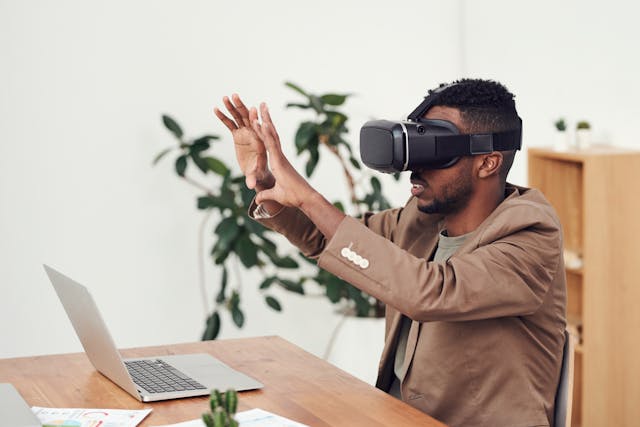In a world where technology is constantly pushing the boundaries of what we once thought possible, augmented reality (AR) stands out as a beacon of innovation, blurring the lines between the physical and digital realms. Augmented reality, often abbreviated as AR, is a transformative technology that overlays digital information onto the real world, providing users with an enhanced and immersive experience. From gaming to education, from retail to healthcare, the applications of augmented reality are vast and ever-expanding, promising to revolutionize the way we interact with our surroundings.
The Basics of Augmented Reality
At its core, augmented reality seamlessly integrates computer-generated content – such as images, videos, or 3D models – into the user’s view of the real world. Unlike virtual reality (VR), which transports users to entirely digital environments, augmented reality enhances the real world by adding virtual elements that coexist with the physical environment. This is typically achieved through the use of AR-enabled devices such as smartphones, tablets, smart glasses, or specialized AR headsets.
Applications Across Industries
1. Gaming: One of the most prominent uses of AR is in gaming. Games like Pokémon GO have captured the imagination of millions, allowing players to hunt for virtual creatures overlaid onto the real world using their smartphones. AR gaming opens up a realm of possibilities for interactive and immersive gameplay experiences.
2. Education: Augmented reality has the potential to revolutionize education by making learning more engaging and interactive. Imagine students being able to explore the solar system by simply pointing their device at the sky or dissecting virtual organisms in biology class. AR brings learning to life in ways previously unimaginable.
3. Retail: Retailers are leveraging AR to enhance the shopping experience both online and offline. Virtual try-on apps allow customers to see how clothing or accessories look on them before making a purchase, while AR-powered product visualization tools enable shoppers to preview furniture or home décor in their own living spaces.
4. Healthcare: In the healthcare sector, augmented reality is being used for purposes ranging from surgical training and planning to patient education and rehabilitation. Surgeons can visualize patient anatomy in 3D during procedures, while AR-assisted rehabilitation exercises help patients recover from injuries or surgeries more effectively.
5. Architecture and Design: Architects and designers are using AR to visualize and present their projects in a more immersive way. Clients can walk through virtual models of buildings before they are constructed, gaining a better understanding of the final design and making more informed decisions.
Challenges and Future Directions
While the potential of augmented reality is undeniable, there are still challenges to overcome. Technical limitations, such as the need for more advanced hardware and software solutions, as well as concerns related to privacy and data security, must be addressed to fully realize the promise of AR.
Looking ahead, the future of augmented reality holds boundless possibilities. As technology continues to evolve, we can expect to see increasingly sophisticated AR experiences that seamlessly integrate with our daily lives. From personalized shopping experiences to immersive entertainment and beyond, augmented reality is poised to shape the way we perceive and interact with the world around us.



